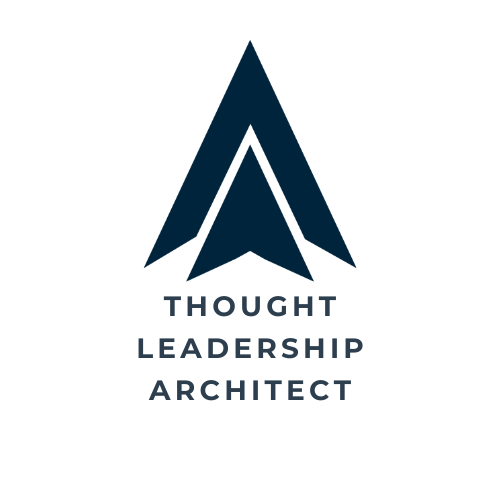In a noisy digital world where leaders and brands are competing for attention, the ones who stand out are not always the ones with the longest white papers or the largest ad budgets. They are the leaders who have mastered mental shortcuts — the ability to take complex ideas and distill them into clear, actionable wisdom. These shortcuts are known as heuristics, and they are quietly transforming the way thought leaders communicate, influence, and build authority.

What Are Heuristics?
The term heuristics comes from the Greek word heuriskein, meaning “to discover” or “to find.” Psychologists Amos Tversky and Daniel Kahneman popularized the concept in the 1970s, showing how people rely on mental shortcuts to make decisions quickly under uncertainty (Tversky & Kahneman, 1974).
Instead of weighing every possible fact, we use rules of thumb — like “go with your first instinct” or “trust the expert.” Heuristics help us survive, but in leadership and communication, they also help us simplify complexity into clarity.
As Herbert Simon, Nobel laureate and pioneer in decision science, once noted:
“A wealth of information creates a poverty of attention.”
Heuristics are how thought leaders fight this poverty. They make ideas memorable, shareable, and actionable.
Why Heuristics Matter in Thought Leadership
Thought leadership is not about showing how much you know — it’s about guiding others toward clarity, consistency, and credibility. Heuristics serve as a framework to achieve that:
- Clarity → Complex ideas become simple enough to spread.
- Consistency → Short rules create repeatable content themes.
- Credibility → Rules backed by examples and data feel trustworthy.
When a leader shares a “rule of thumb” that works, they shift from being just a content creator to being a compass. Followers don’t just read them — they use them.
Practical Heuristics for Thought Leadership
Here are a few heuristics that apply directly to content creation and leadership communication:
1. The 70/20/10 Rule
- 70%: Core insights in your area of expertise.
- 20%: Trends, industry news, and commentary.
- 10%: Personal stories and reflections.
👉 This balances authority with relatability. Leaders who only post insights sound rigid; leaders who only post personal stories lose credibility.
2. The Borrowed Credibility Rule
Anchor your insights with references. Cite studies, experts, or historical examples — then add your unique commentary.
As management expert Peter Drucker said, “The best way to predict the future is to create it.”
Now, apply that to AI adoption in your industry.
This heuristic keeps your voice strong while leveraging established trust.
3. The Founder’s Fuel Rule
One insight per day = endless content supply.
Every time you have a client call, a team meeting, or read an article, note one idea. Convert it into a post. Over time, these daily sparks compound into a library of authority.
4. The Reader-First Lens
Always ask: “What does my audience gain from this?”
If the answer is “only more knowledge about me,” it’s not thought leadership — it’s self-promotion. Real thought leadership turns the spotlight outward.
5. The Goldilocks Test
Not too vague, not too dense — just right.
- Too vague: “Leaders should communicate better.”
- Too dense: “Our proprietary multi-channel sentiment analytics model optimizes synergy.”
- Just right: “Leaders build trust by saying less, more clearly.”
This heuristic ensures your ideas land where people can act on them.

The Cognitive Science Behind Influence
Psychologists argue that people retain information better when it’s delivered in short, repeatable heuristics. This is the availability heuristic at work: if something is easy to recall, it feels true.
Marketing researcher Robert Cialdini echoes this in Influence: The Psychology of Persuasion (1984):
“People are more likely to be influenced by messages that are simple, familiar, and consistent with their existing beliefs.”
For thought leaders, this means clarity is not just nice — it’s neuroscience-backed influence.
Heuristics in Action: Content Examples
| Heuristic | Example Post | Impact |
|---|---|---|
| 70/20/10 Rule | “70% of my posts share lessons from my consulting work, 20% highlight AI trends, 10% reflect on faith and leadership.” | Builds rhythm + trust |
| Borrowed Credibility | “Harvard research shows leaders who write regularly are perceived as 23% more credible. Here’s how I help my clients do it.” | Adds proof |
| Founder’s Fuel | Sharing a client success story with 1 takeaway | Creates daily content flow |
| Reader-First Lens | Post ends with: “Here’s how you can apply this today…” | Audience feels included |
| Goldilocks Test | “AI won’t replace leaders. Leaders using AI will replace those who don’t.” | Clear + memorable |

How to Apply Heuristics to Your Thought Leadership Strategy
- Choose 3–5 heuristics that align with your brand voice.
- Repeat them often — familiarity builds recognition.
- Embed them in content formats: LinkedIn posts, keynotes, blogs, and interviews.
- Test them in live settings: client workshops or team meetings. If people repeat your phrase back, it’s working.
- Refine as needed: heuristics should evolve as your industry does.
Heuristics as the DNA Thought Leadership
In the end, heuristics aren’t shortcuts for laziness — they are shortcuts for clarity. They are how complex ideas become portable, memorable, and transformative.
As the philosopher Blaise Pascal once wrote:
“I would have written a shorter letter, but I did not have the time.”
True thought leadership requires the discipline to simplify — and heuristics are your best tool for doing so.
By adopting heuristics in your strategy, you position yourself not just as a leader with insights, but as a leader whose wisdom spreads, sticks, and shapes action.
Bibliography
- Cialdini, R. (1984). Influence: The Psychology of Persuasion. Harper Business.
- Kahneman, D., & Tversky, A. (1974). “Judgment under Uncertainty: Heuristics and Biases.” Science, 185(4157), 1124–1131.
- Drucker, P. (1999). Management Challenges for the 21st Century. HarperBusiness.
- Simon, H. A. (1971). Designing Organizations for an Information-Rich World. Baltimore: Johns Hopkins Press.
#ThoughtLeadership #AuthorityBranding #ClarityConsistencyCredibility #LeadershipStrategy #Heuristics #ContentStrategy #Influence #DecisionMaking #ThoughtLeadershipArchitect



Leave a Reply